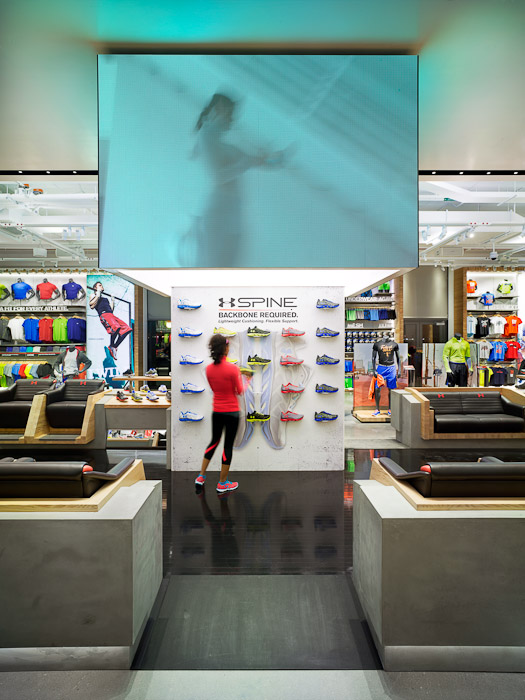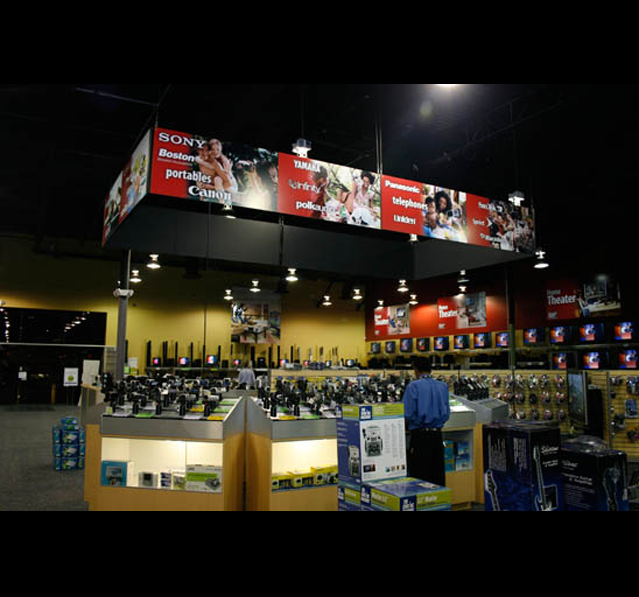Brick & Mortar Solutions for Shrinking Retail Square Footage
The Future for Physical Retail Stores Can Look Bright
Recent events in world have taken a toll on selected retail sales segments at brick and mortar stores, however physical retail is not dead. There is one caveat – physical retailers and manufactures of products, that do not strategically evolve in the face of changing shopper wants and new technology are declining. Innovating the customer experience will benefit those that recognize its importance. This needs to be done via multitude of channels for the customers to engage your brand and products. Those organizations that are ever evolving with the retail landscape are and will thrive.
As we embark on 2021, it’s important that brands recognize physical and digital stores should connect with an omnichannel approach that provides a retail experience – with many ways to pay and many ways to deliver for instance. Often retail locations that get this right see increases in e-commerce business after opening physical stores in a particular geography. In contrast, a strong online presence can drive traffic in-store, as customers seek to try before they buy. The two work together, rather than compete.
Shrinking square footage across most retail stores is driving product manufacturers and retailers to differentiate their brand from everyone else. One of the keys is to make your products or store easy to “try it out” before the final purchase is made. This can be accomplished by getting products out of boxes and easily accessible by customers. Allow them to get the experience of your product, store, or brand. The number of products that retailers are carrying is going down because the average square footage is shrinking. That said, it is critical to make sure your product or store has an amazing interactive opportunity that is higher end than your competitors. We must stand out and have fixtures and millwork that sets our brand apart and helps retailers sell more inventory. If not, retailers will not carry our products in a shrinking square footage environment.
By The Numbers
In a recent survey conducted by MasterCard, 47% of retail executives reported significant competition from online-only businesses. Nearly 60% noted that they’ve been forced to close physical stores that can be attributed to the competition, and 33% of those affected have been able to offset the loss in sales with online transactions to recover more than 25% of lost sales.
One of the realities we must face at the retail brick and mortar stores is this… as online sales grow, brick and mortar stores will look to cut costs. This has been accelerated by COVID-19 as consumers look to decrease in person safety risks and in turn driving online sales up. Take a look at a few trends that point to this.
- Grocery stores nationally reducing from average of 48,700 to 41,000
square feet from 2006 to 2019 - Target has launched 130 small footprint stores
- Nordstrom has launched Nordstrom Local with 3000 square feet instead of 140,000 square foot stores
- Best Buy is aggressively reducing square footage in retail stores
- E-commerce will continue to accelerate 13% – in 2019 goods bought online globally up from 6% in 2014. Forbes states that COVID-19 will accelerate this.
- Amazon saw a 35% increase during pandemic period in March and April 2020 according to Facteus
- COVID-19 may finish off the retailer reckoning that Amazon started
Many have identified the reasons behind the some of the trends tipping in the favor of online shopping – most notably, pricing, marketing, delivery speed, and brand recognition as reasons that give e-commerce businesses an upper hand at times.
With a growing trend in decreased store size it is imperative for brands and products to be differentiated from competitors in order to stay in the shrinking brick and mortar stores. It will be more important for brands and products to support retailers and make it easier to select this product to have in their store, over another similar product. Having a program for fixtures or an simple ordering systems are ways to make it easier for retailers to select your brand or product to represented in their store.
In response to the growing online threat, retailers and product manufacturers alike are addressing these challenges with improved in-store experiences, lowered prices, and an improved omnichannel presence.
Combined with these changes, physical retailers are also taking advantage their brick-and-mortar advantage over pure-play e-commerce sites by offering cross-channel shopping experiences — such as BOPIS (buy-online-pickup-in-store) and BORIS (buy-online-return-in-store) — as a way to drive more in-store traffic. The store is no longer just a channel for buying and selling — it’s a fulfillment center, an experience for customers and an great touchpoint between your customers and your brand.
To capitalize on this opportunity, retailers and product manufacturers should focus on creating in-store experiences that inspire customers to keep coming back.








